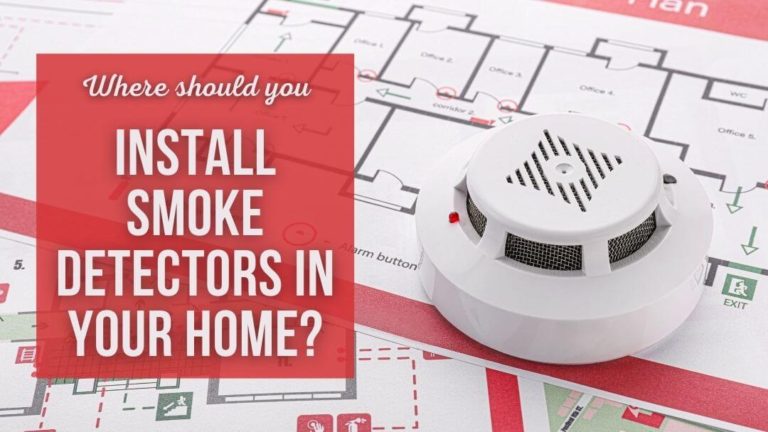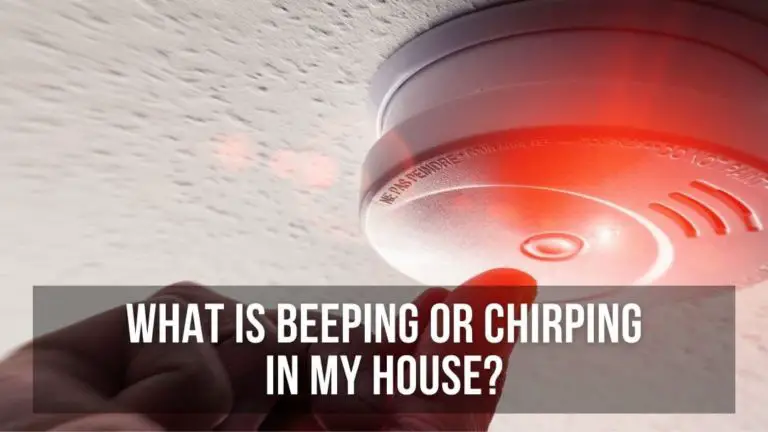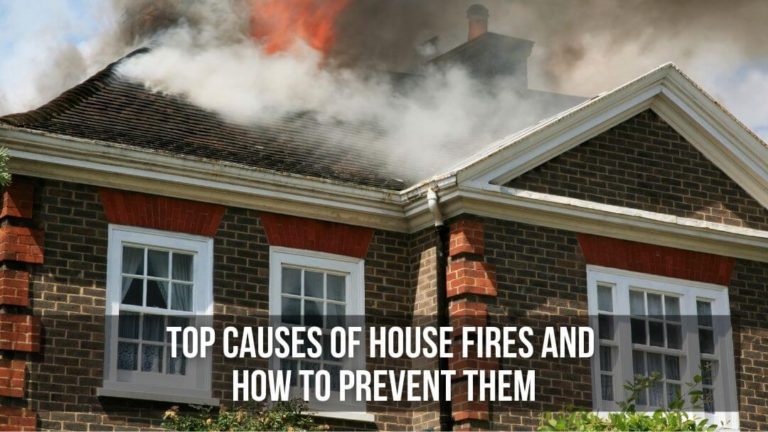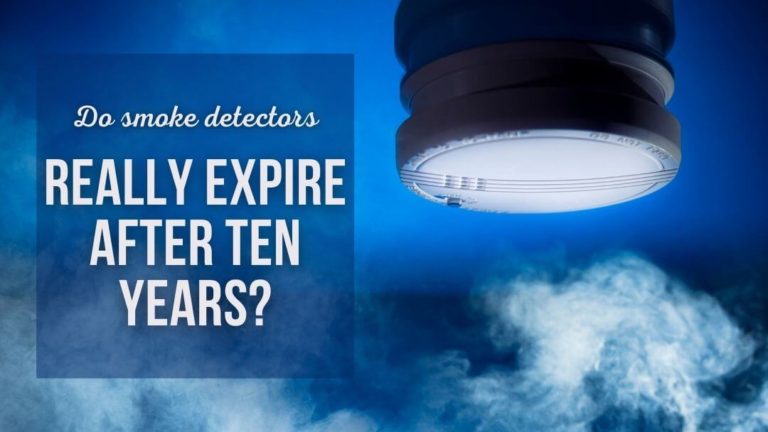Why Are My Smoke Detectors Chirping?
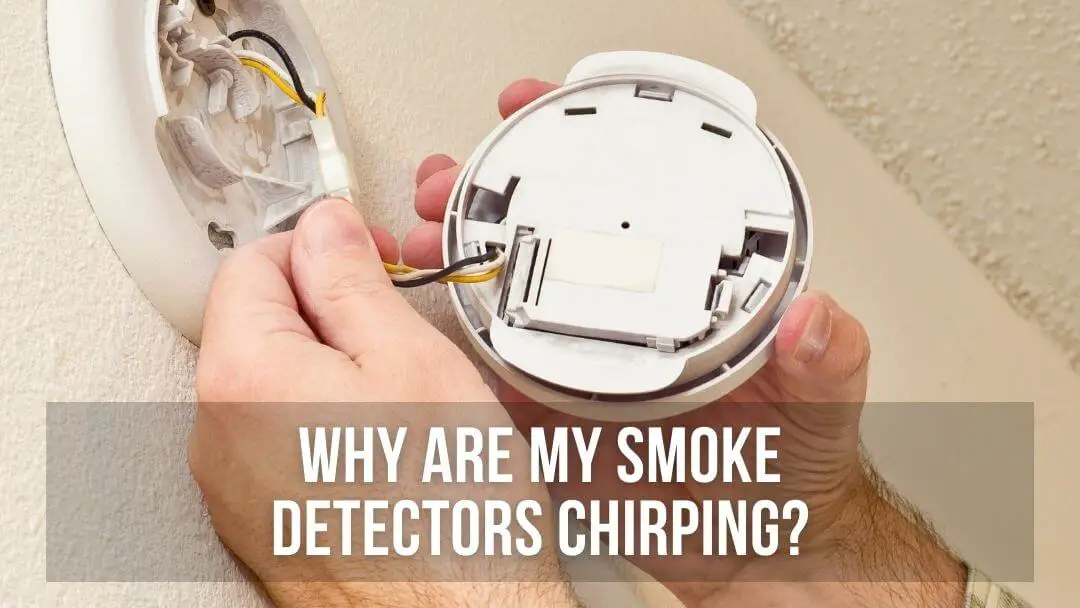
A chirping smoke detector can be very annoying, but it’s warning you of a trouble condition.
Why are my smoke detectors chirping? A smoke detector will chirp every 60 seconds due to a low battery. To stop the chirping, twist the smoke detector off its base and replace the battery.
This article will address a smoke detector that sounds a quick chirp every 60 seconds. If your smoke detector is beeping three times, click here for help.
Having well-maintained smoke alarms can save your life and property, but most chirping smoke detectors end up with their batteries removed or just disconnected and placed in a drawer.
Unfortunately, these smoke detectors never get put back.
Common reasons why your smoke detectors are chirping
- The smoke detector has a low battery
- The circuit breaker in your electrical panel has tripped and the smoke detector is operating with the battery backup
- You’ve replaced the battery but the smoke detector keeps chirping.
- Something else in the house is chirping and you’ve replaced the battery in the wrong device
1- Smoke detector has a low battery
There are two types of smoke detectors. One is battery operated. The other type is a hard-wired smoke detector powered from your home’s electrical system with a battery backup in case of a power failure.
Replacing the battery in a wireless smoke detector
Stopping the chirping noise with a battery-operated smoke detector is easy
With a battery-operated smoke detector, you can access the battery from either the front or back of the smoke detector, behind a pull-out tab.
First, remove the battery and press and hold the test button on the front of the smoke detector for ten seconds to discharge the smoke detector.
Discharging the detector drains any voltage still stored inside the unit and clears the low battery memory. You might hear one last beep or chirp, and then the sensor is ready for the new batteries.
You will need either one 9 volt rectangular battery or two or three AA batteries.
When installing the new batteries, make sure you observe the correct polarity for the batteries. The batteries are marked with a (+) and a (-).
After installing the new batteries, put the smoke detector back on its mounting bracket that is screwed into the ceiling and press and hold the test button for five seconds until you hear a three-beep repeating pattern coming from the detector.
Pressing the test button puts the battery into alarm mode and tests the battery level.
If you still hear a chirping noise coming from the smoke detector after replacing the battery, then press and hold the test button one more time to perform a second test.
If the smoke detector is still beeping, it’s likely that the sensor has reached its end of life and should be replaced.
Smoke detectors don’t last forever. If your smoke alarms are more than ten years old, it is recommended to replace them with new ones.
You can order smoke detectors on Amazon.
Replacing a battery in a hard-wired smoke detector
Replacing a battery in a hard-wired smoke detector is similar to replacing a battery in a wireless smoke alarm but may require one additional step.
With hard-wired smoke detectors, the battery compartment is located either in the back or on the side of the unit.
If the battery is located on the side, then slide open the pull-out tab and replace the battery.
If the battery is located on the back of the smoke detector, then you may need to disconnect the wires to get to the battery.
When you remove the smoke detector off of its base, you will see a set of wires attached to it. These wires are commonly black and white, and sometimes a third red wire.
The wires are attached to the detector with a clip. This clip sometimes has to be removed to get to the battery compartment on the back of the unit.
These wires are connected to your home’s electrical system, so be careful when touching them.
Do not pull on the wires. You must unplug the clip that is attached to the smoke detector.
The clip has two tabs; squeeze the tabs together and remove the clip, open the battery compartment and remove the battery.
Remove the battery and press and hold the test button on the front of the smoke detector for ten seconds to discharge the smoke detector.
Discharging the detector drains any voltage still stored inside the unit and clears the low battery memory. You might hear one last beep or chirp. Then the sensor is ready for the new batteries.
You will need either one 9 volt rectangular battery or two or three AA batteries.
When installing the new batteries, make sure you observe the correct polarity for the batteries. The batteries are marked with a (+) and a (-).
After installing the new batteries, Plug the wire clip back into the smoke detector and put the smoke detector back on its mounting bracket that is screwed into the ceiling.
Press and hold the test button for five seconds until you hear a three-beep repeating pattern coming from the detector.
Pressing the test button puts the battery into alarm mode and tests the battery level.
After pressing the test button, you may also hear smoke detectors beeping throughout other parts of the house, this is normal, and all the smoke detectors should silence after about 10 to 20 seconds.
2- The circuit breaker in your electrical panel has tripped and the smoke detector is operating with the battery backup.
When a hard-wired smoke detector loses electrical power, it switches to battery backup mode.
Some detectors will start chirping to alert you that your fire alarms have lost power.
A good sign that there is no power getting to the detectors is that all of the smoke alarms in the house are chirping, not just one.
To reset the power, go to your electrical circuit breaker panel and look for a breaker labeled “smoke detectors.”
Hopefully, your electrician has marked all of the circuit breakers. If not, you will have to look for a breaker that is either in the off position or in between the on and off position.
Sometimes though, it isn’t easy to see which breaker has tripped. Some breakers will look like they’re still in the on position even if they have tripped, so you will have to turn off each circuit breaker one at a time and turn them back on.
After you find the breaker that has tripped, your smoke detectors should stop chirping.
3- You’ve replaced the battery but the smoke detector keeps chirping.
Make sure that you use fresh batteries, don’t use batteries that have been lying around for a couple of years.
Remove the batteries from the smoke detector and press and hold the reset/test button for ten seconds to discharge the smoke detector.
Smoke detectors have capacitors inside their circuit board that hold a charge even when the batteries are removed. If you don’t discharge the capacitors, you will not allow the detectors’ internal low battery memory to clear.
Put the new batteries in after you discharge the smoke detector, and now press and hold the test/reset button again.
When installing the new batteries, make sure you observe the correct polarity for the batteries. The batteries are marked with a (+) and a (-).
The smoke detector will now start beeping to perform a self-test. The beeping might last 10 to 20 seconds and stop.
The smoke detector should stop chirping after the self-test is complete. If not, repeat the test one more time.
4- Something else in the house is chirping and you’ve replaced the battery in the wrong device
Fortunately, only a few things in your house make a chirping noise.
Smoke and carbon monoxide detectors are the usual suspects about 95% of the time, but thermostats, battery backup modules for your cable, and telephone modems can also cause a similar problem.
Finding a chirping device is not as easy as it may sound. The chirping noise is a high-pitched noise that makes it hard to know exactly where it is coming from.
It is pretty common to replace the batteries in the wrong smoke detector or carbon monoxide detector.
One trick you can use is to remove the power and battery from the detector that you think is chirping for about ten minutes. Wait and see if the chirping stops, then you know that you have the right device.
I recommend replacing all of the batteries in your smoke detectors at the same time every year to avoid the annoying chirping noise altogether.
How often should you replace the batteries in your smoke detectors?
The National Fire Protection Association (NFPA) recommends replacing your smoke detector batteries every six months and replacing the entire smoke detector every ten years.
Most new smoke detectors sold today come with a non-replaceable battery that lasts a full ten years.
You can find these smoke detectors on Amazon. Click here to check the price.
Final thoughts
Smoke detectors play a crucial role in protecting your home and family against fires, but they are of no use if they are not properly maintained. Make sure you replace the batteries on a semi-annual schedule.
Related articles:
Why are my smoke detectors beeping three times?
Which fire extinguisher should I buy for my home?
Where should carbon monoxide detectors be installed in my home?

